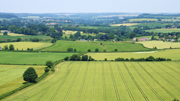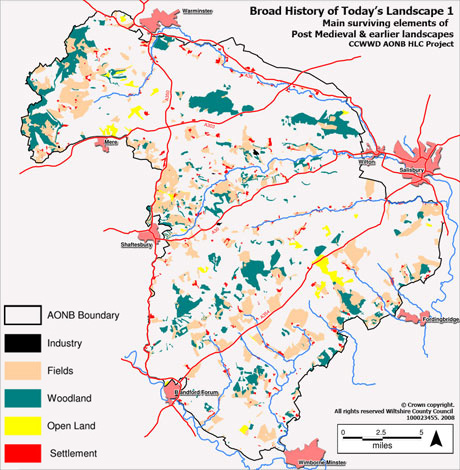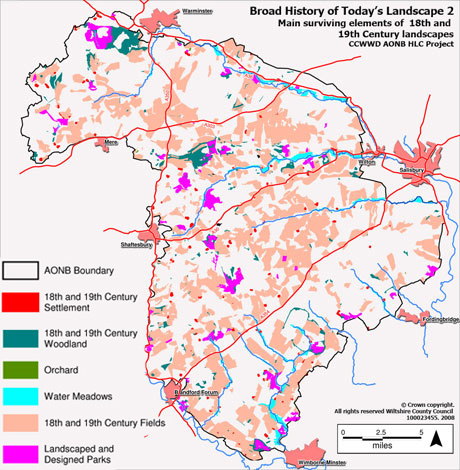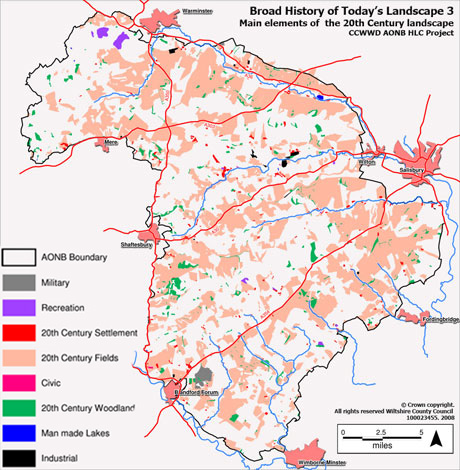Previous Time Periods

The HLC dataset can be used to produce maps of how each time period identified contributes to today's landscape in the AONB. These maps represent the dominant Current Historic Landscape Type in the landscape and not the previous traces of land use history recorded as Previous Historic Landscape Types (see Previous Land Uses).
The landscape history of today's landscape in the AONB can be explored further in these series of maps. (Use the arrows below the image to scroll, the text will change below the arrows)

-
Main surviving elements of Post Medieval and earlier landscapes

This map shows the oldest landscape elements which survive in today's landscape as Current Historic Landscape Types - note the blocks of old woodland which exist across the West Wiltshire Downs, along the north west edge of the AONB and across the Wooded Chase Downlands. Also of note is the predominance of ancient fields and settlement in the Vale of Wardour. Conversely, the only intact elements of older landscapes remaining in the Vale of Wylye are the settlements. -
Main surviving elements of 18th and 19th century landscapes

The map shows the dominance and impact of the new enclosures which were created at this time, especially across the Southern Downland Belt, and the West Wiltshire Downs. This is also the period when the prominence of the landscaped and designed park was at its height. It must be remembered, however, that many of these parks also contain traces of earlier stages in their development, and that the estates and parkland that they represent were also a dominant feature of the medieval and post medieval landscape. -
Main surviving elements 20th Century landscapes

Fields with primarily 20th century characteristics dominate the Wylye Valley and the eastern edge of the AONB. New scattered woodlands have also been planted especially across the Chase Downlands. New novel land uses have also started to creep into the AONB including areas for recreation around Longleat, the military camp at Blandford and light industrial areas and estates and units, notably at Dinton.

